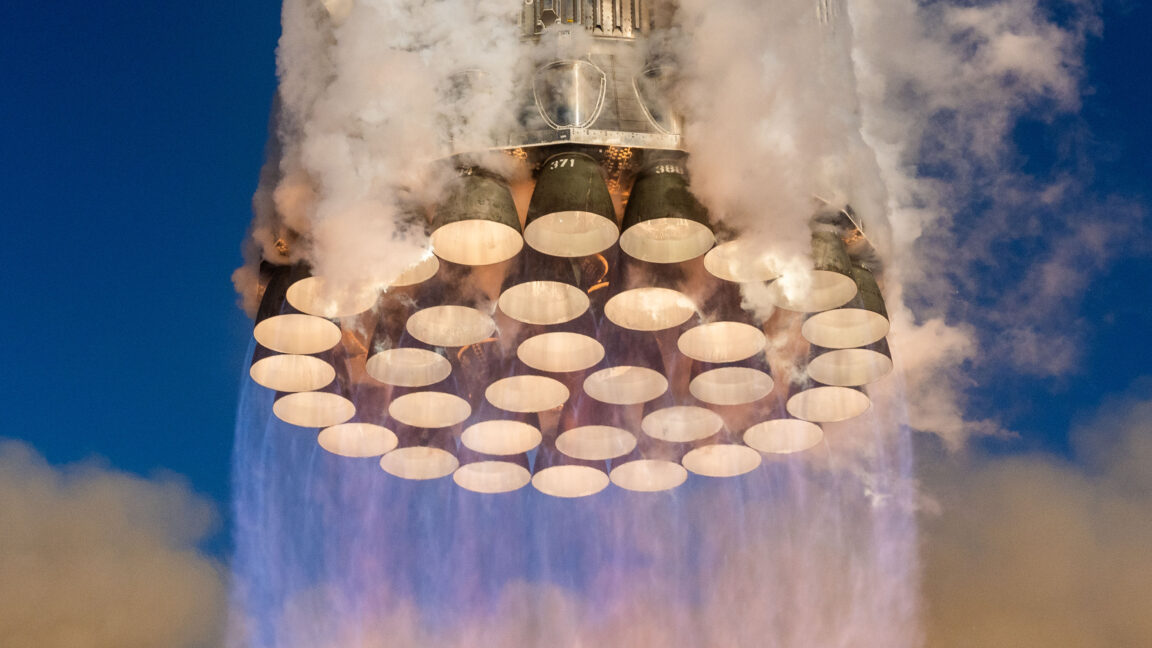After a long day of stops and starts that stretched well into the evening, and on what appeared to be the company's fifth attempt Friday, Blue Origin successfully ignited the seven main engines on its massive New Glenn rocket.
The test firing came as fog built over the Florida coast, and it marks the final major step in the rocket company's campaign to bring the New Glenn rocket—a privately developed, super-heavy lift vehicle—to launch readiness. Blue Origin said it fired the vehicle's engines for a duration of 24 seconds. They fired at full thrust for 13 of those seconds.
"This is a monumental milestone and a glimpse of what’s just around the corner for New Glenn’s first launch," said Jarrett Jones, senior vice president of the New Glenn program, in a news release. "Today’s success proves that our rigorous approach to testing—combined with our incredible tooling and design engineering–is working as intended."
Completion of the dynamic hot-fire test sets up a historic moment for the company founded by Jeff Bezos nearly a quarter of a century ago: the firm's first ever orbital launch attempt. It will occur from Launch Complex-36, at Cape Canaveral Space Force Station.
Blue Origin's post-test update did not include a launch date, but based on flight advisory information, a no-earlier-than launch date is likely to be January 6.
A license to fly
Friday was important for New Glenn's debut mission in another way. Several hours before the test firing, the Federal Aviation Administration said it had issued a launch license for the rocket. The license allows Blue Origin to conduct orbital missions from Cape Canaveral with New Glenn, as well as to attempt first-stage landings on a barge in the Atlantic Ocean. The license is valid for five years.
After years of waiting, Blue Origin’s much-anticipated mission is finally coming together. Today’s hot-fire test, taking place just two days after the Christmas holiday in the United States, reflects the urgency that Bezos has injected into his rocket company over the last 18 months. In the fall of 2023, Bezos ousted Bob Smith as chief executive of Blue Origin and tapped a long-time Amazon executive, Dave Limp, to lead the company.
During an interview at the time, Bezos acknowledged that Blue Origin was moving more slowly than he had hoped. "Blue Origin needs to be much faster, and it's one of the reasons that I left my role as the CEO of Amazon a couple of years ago," he said. "I wanted to come in, and Blue Origin needs me right now. Adding some energy, some sense of urgency. We need to move much faster. And we're going to."
Over the last year the company has appeared more nimble as it raced toward the launch pad, completing work on its ground-based infrastructure, assembling the rocket, and preparing a fleet of ships upon which Blue Origin intends to land New Glenn's first stage for potential reuse.
Alive in 2025
At the end of October, the company rolled the rocket's first stage from its production facility in Florida to the launch pad, and about three weeks later, just before the Thanksgiving holiday, the company moved the integrated first and second stage out to the launch pad for testing.
Now that the hot-fire test is completed, the company will roll the rocket back into a large integration hangar to install the small "Blue Ring" spacecraft, a test version of an in-space transportation vehicle the company is developing for last-mile and other services for payloads in space.
Then the completed rocket will be rolled back out to the launch site in Florida for an attempt, possibly as soon as the first week of the new year.
The launch comes at an important time in the US space industry. The incoming Trump White House is expected to take a hard look at NASA's current plans for the Artemis Program to return humans to the Moon, and if New Glenn can prove itself to be a reliable heavy lift rocket, it could have an important role to play in getting humans to the lunar surface.


